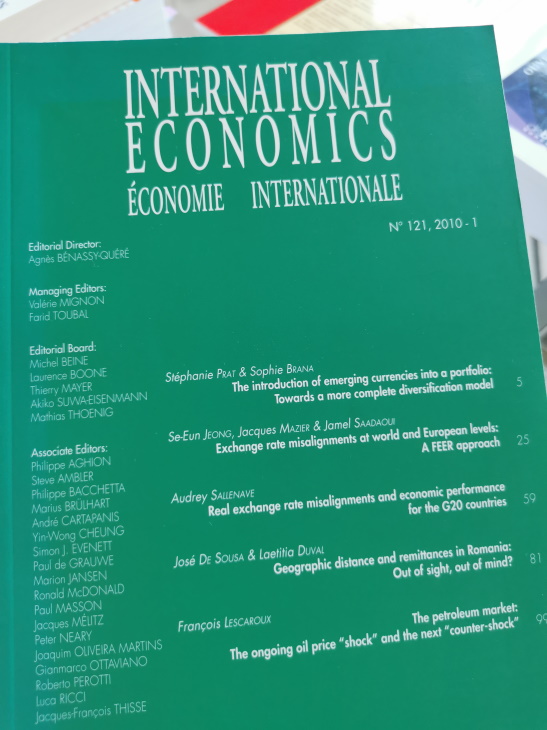As far as I remember, I always wanted to be a researcher in social sciences. It is great pleasure for me to share with the world, my first published research. My dream slowly becomes a reality.
The title of this post has been inspired by this article of The Economist.
Abstract. Since the mid-1990s, we observe an increase in world current account imbalances. These imbalances have only been partially reduced since the burst of the crisis in 2007. They reflect, to some extent, exchange rate misalignments, an issue which has been frequently studied in the literature. However, these imbalances, which have reinforced in the 2000s, are also important inside the Euro area. This analysis cannot be reduced to simple estimates of euro misalignment at the world level because of specific constraints that exist for each member of the Euro area. This article aims to examine to what extent European imbalances reflect exchange rate misalignments for each “national euro.”
Résumé. Les déséquilibres des comptes courants mondiaux se sont accrus depuis le milieu des années quatre-vingt-dix et ne se sont que partiellement réduits à partir de l’éclatement de la crise en 2007. Dans une certaine mesure, ils sont le reflet des mésalignements de taux de change, ce qui a été largement étudié dans la littérature. Cependant, ces déséquilibres, qui se sont accentués dans les années 2000, sont également importants dans la zone euro. L’analyse de ce point ne peut se réduire à de simples estimations du désalignement de l’euro au niveau mondial, car il faut tenir compte des contraintes spécifiques à chaque membre de la zone. Cet article étudie dans quelle mesure les déséquilibres intra-européens reflètent des mésalignements de taux de change pour chaque “euro national.”

1 Comment
[…] unification is converted in euro before the monetary unification with the entry rates. It is interesting to note that the current euro exchange rate vis-à-vis the US dollar is lower than in the Bretton […]